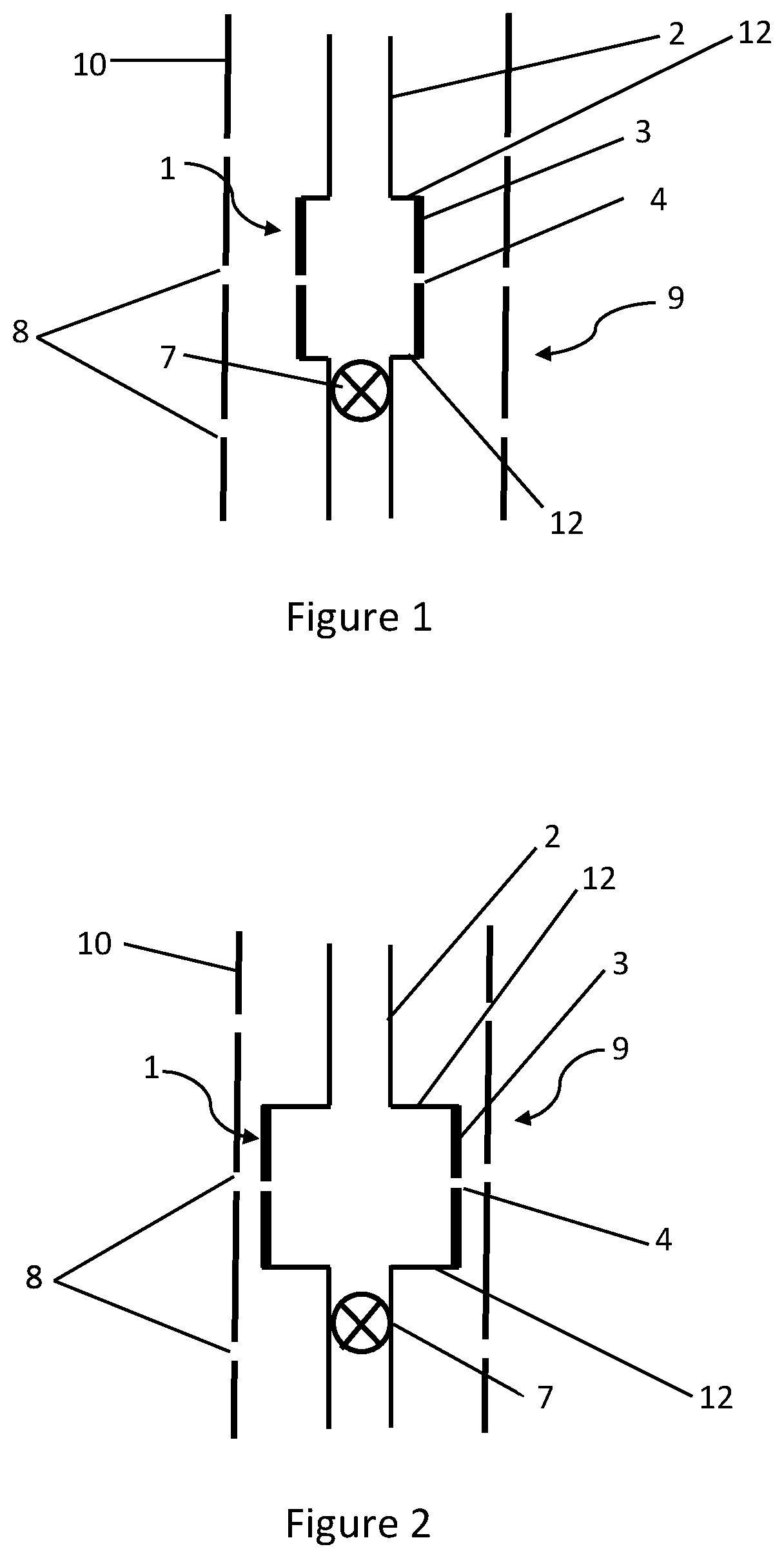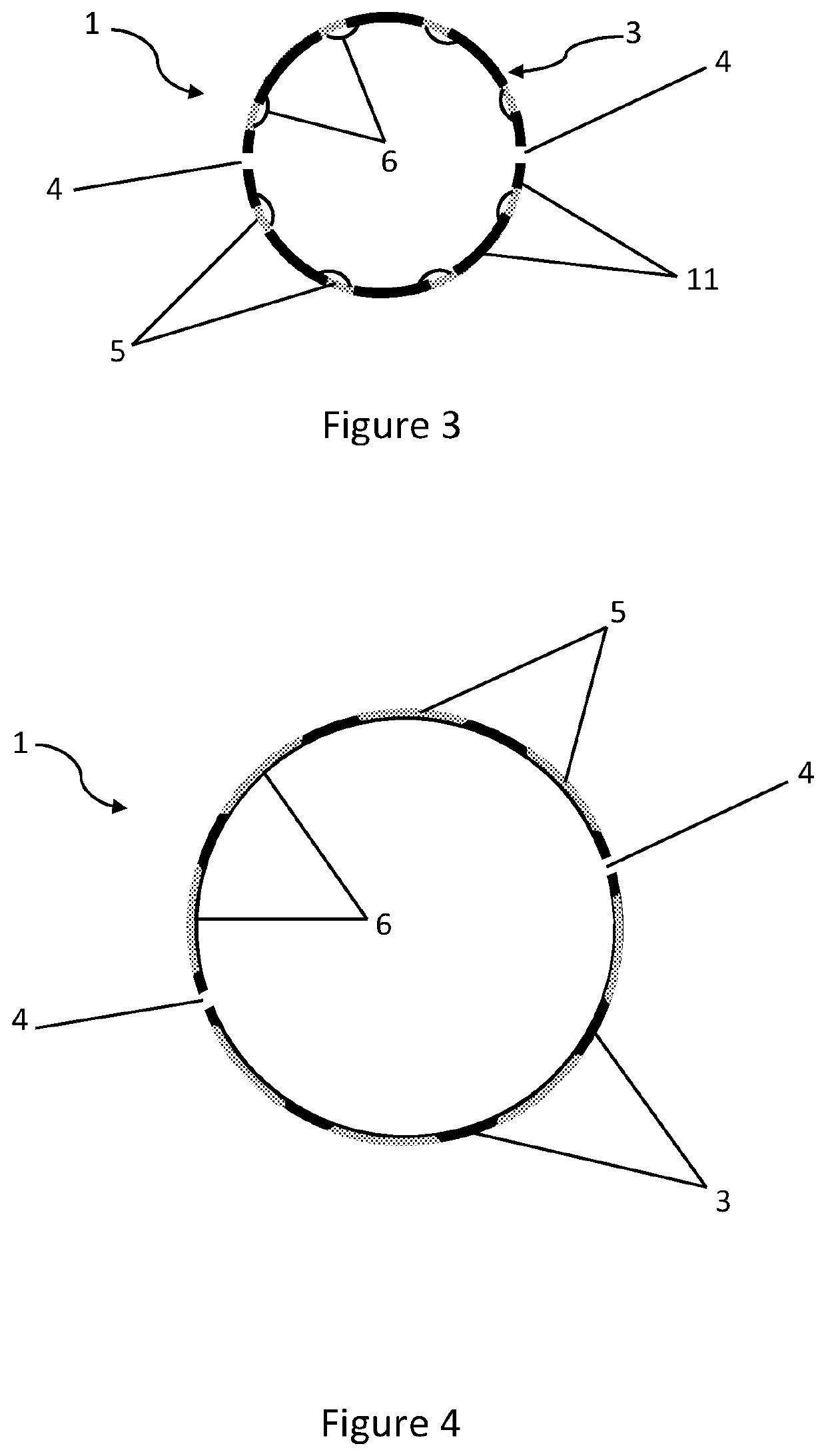Behind casing cementing tool
a cementing tool and casing technology, applied in the direction of sealing/packing, earthwork drilling and mining, and wellbore/well accessories, etc., can solve the problems of tool jamming in the casing, inability to achieve effective cement bond, and high cost of remedying, so as to reduce the diameter of the tool is reduced, and the path is small.
- Summary
- Abstract
- Description
- Claims
- Application Information
AI Technical Summary
Benefits of technology
Problems solved by technology
Method used
Image
Examples
Embodiment Construction
[0029]Turning now to the detailed description of the preferred arrangement or arrangements of the present invention, it should be understood that the inventive features and concepts may be manifested in other arrangements and that the scope of the invention is not limited to the embodiments described or illustrated. The scope of the invention is intended only to be limited by the scope of the claims that follow.
[0030]Referring firstly to FIG. 1, a cementing tool 1 is shown in highly schematic form. The aspect ratio of the real tool would be considerably longer, but it is illustrated in this way for clarity. The tool 1 comprises in essence a hollow cylindrical shape with two apertures 4 in the cylindrical wall 3. These apertures 4 are lined with a wear resistant material to avoid them being worn away when cement is jetted through them—this is not shown in the drawing but is in itself conventional.
[0031]The tool 1 is attached to drill string 2 on which it would be run into a well. Ben...
PUM
 Login to View More
Login to View More Abstract
Description
Claims
Application Information
 Login to View More
Login to View More - R&D
- Intellectual Property
- Life Sciences
- Materials
- Tech Scout
- Unparalleled Data Quality
- Higher Quality Content
- 60% Fewer Hallucinations
Browse by: Latest US Patents, China's latest patents, Technical Efficacy Thesaurus, Application Domain, Technology Topic, Popular Technical Reports.
© 2025 PatSnap. All rights reserved.Legal|Privacy policy|Modern Slavery Act Transparency Statement|Sitemap|About US| Contact US: help@patsnap.com


